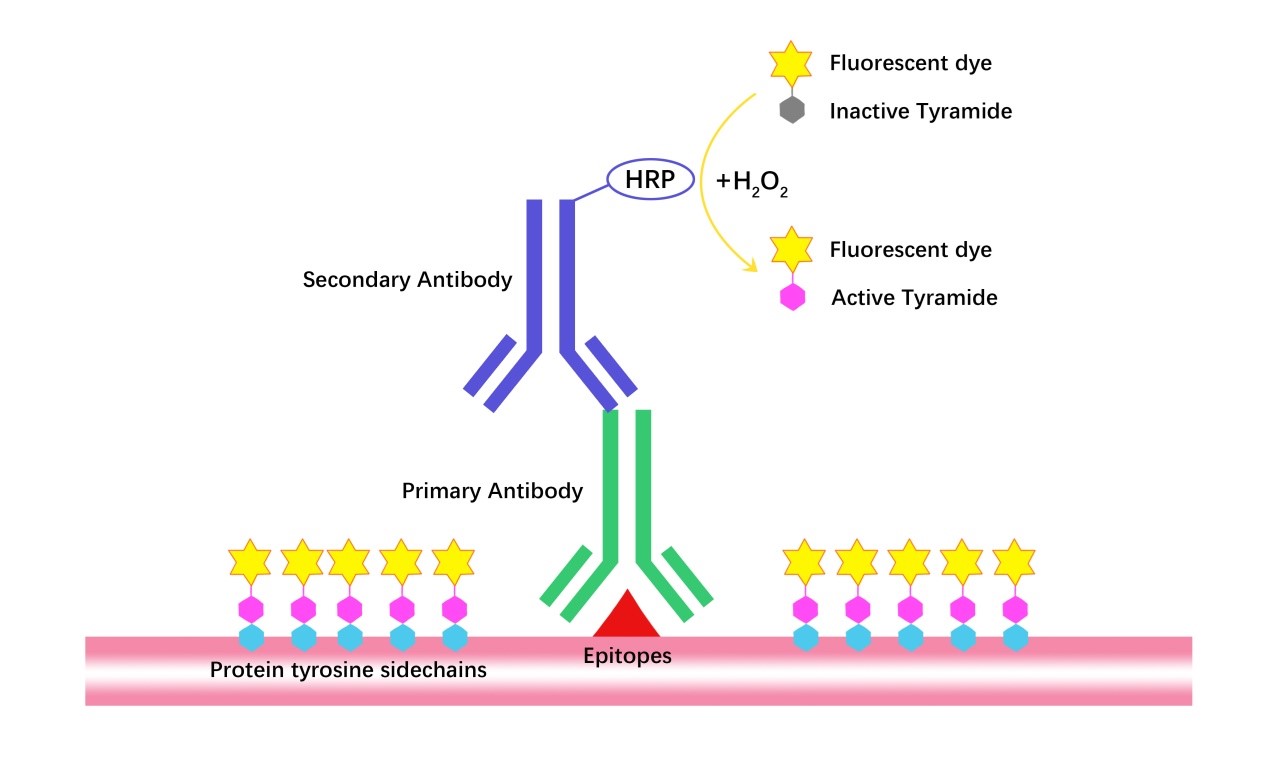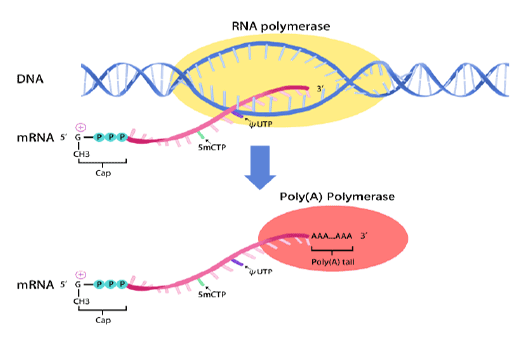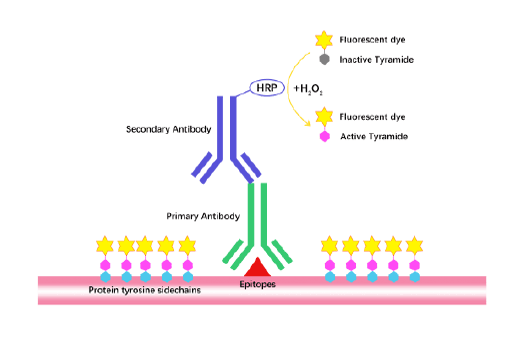HyperFluor™ 488 TSA Fluorescence System Kit
The HyperFluor™ 488 TSA Fluorescence System Kit uses tyramide signal amplification (TSA) to boost detection sensitivity in IHC, ICC, and ISH. HRP-linked secondary antibodies catalyze HyperFluor™ 488-labeled tyramide into a reactive intermediate that covalently binds adjacent tyrosine residues, depositing high-density fluorescence around targets to amplify low-abundance molecule detection. Detectable via fluorescence microscopy (excitation 495 nm, emission 519 nm), it applies to analyzing proteins, nucleic acids, and other biomolecules in fixed cells and tissues.

Schematic diagram of tyramide signal amplification system
Label the cell or tissue sample with the primary and secondary antibodies using conventional methods. The horseradish peroxidase (HRP) conjugated to the second antibody catalyzes the conversion of the labeled tyramide to a reactive radical, and the tyramide radical is covalently bound to a nearby tyrosine residue to provide a high-density label.
| Components | K4301-200 slides | K4301-400 slides |
| 1X Amplification Diluent | 20 mL | 40 mL |
| HyperFluor™ 488 Tyramide (200 X, dry, dissolve in 100 μL DMSO) | 1 tube | 2 tubes |
| Blocking Reagent (BSA) | 6 g | 12 g |
Store HyperFluor™ 488 Tyramide in the dark at -20°C. Keep 1X Amplification Diluent and Blocking Reagent at 4°C. Shelf life: 2 years upon receipt. | ||









